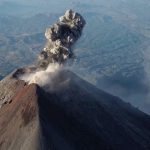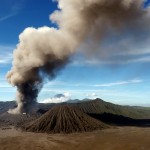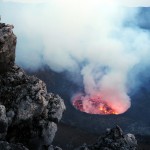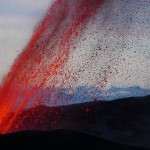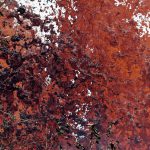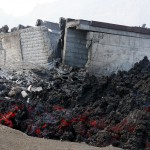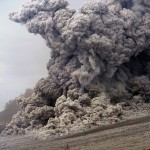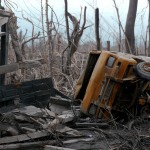A volcano forms over an opening in the crust of a planet, such as Earth. This opening can be a crack or vent. Magma can ascend through this rupture and discharge as lava onto the planet’s surface. The expelled lava gathers around the rupture, leading to the formation of a volcanic structure. The shape of this structure varies depending on the volume and type of lava emitted. It may result in the formation of a small cinder cone or hornito, or it may give rise to a large mountain. When lava with low viscosity is involved, it forms a shield volcano, while highly viscous lava leads to the creation of a steep stratovolcano.
In addition to lava, gases and volcanic ash can also be discharged during an eruption. Prior to an eruption, magma accumulates in a magma chamber located beneath the volcano.
Magma is produced within the Earth’s mantle, either through the partial melting of mantle rocks or through the subduction of the Earth’s crust.
Where the most volcanoes are
There are about 1900 volcanoes on Earth that are classified as potentially active. Most volcanoes grow along the tectonic plate boundaries. 70% of the volcanoes are located in the Pacific Ring of Fire. This is marked by the plate boundaries of the Pacific Plate. Most volcanoes along the Pacific Coast are dangerous subduction volcanoes. These volcanoes usually erupt explosively or produce lava domes. The number of underwater volcanoes is unknown. Most likely, their number is significantly higher than the known volcanoes on land. Sometimes it happens that an underwater volcano appears, and a new volcanic island is formed. The birth of such an island is a tremendous natural phenomenon.
Volcano types
The simplest volcanic form is the fissure volcano. It consists only of fissures in the ground. These fissures can be several kilometers long. Low-viscosity lava erupts from them. Often, lava fountains are produced, which then feed lava flows.
Some of the most spectacular volcanoes were created by mantle plumes. These volcanoes are called “hot spot” volcanoes. One of the most famous hot spot volcanoes is Kilauea in Hawaii. Its last big eruption took place in 2018. Most hot-spot volcanoes erupt effusively. That is, they produce low-viscosity lava. This can form lava lakes, lava fountains, and lava flows. In these eruptions, rarely do people die because they can escape the lava flows. They usually do not move very fast. But there are also hot spot volcanoes like the Yellowstone caldera that produce highly viscous lava. These volcanoes can cause gigantic explosive eruptions called “super volcano eruptions.” These have a VEI of 8 and could trigger a global winter, thus leading to the downfall of human civilization. While the less dangerous hotspot volcanoes form in the oceanic crust, the highly explosive erupting hotspot volcanoes are found on the continents.
Most of these supervolcanoes are caldera volcanoes. Even less dangerous volcanoes can form calderas on their summits. Typical examples are the shield volcanoes in Hawaii.
Another type of volcano is the stratovolcano. They are mainly formed at subduction zones. After particularly strong explosive eruptions, summit calderas can form, as it happened on Mount Tambora in 1815.
Dome volcanoes are some of the most dangerous volcanoes. They build up lava domes, which consist of highly viscous lava. If these domes collapse, pyroclastic flows are created. These hot avalanches of gas and tephra flow down the volcanic slope and destroy everything in their path.
Complex volcanoes often represent a mixture of different volcanic types and have several eruption centers. So, some lava domes can exist next to cinder cones. Cinder cones are a relatively small volcanic form, often only active once. Cinder cones are often found as parasitic cones on the flanks of larger volcanic structures and are monogenetic. They rarely occur alone but form entire fields.
Eruption Types
A volcano can erupt effusively or explosively, and mixed forms of eruption types are also possible. The way in which a volcano erupts largely depends on the type of lava it is erupting. When the lava is thin (low viscousity) and hot, it can lead to the formation of lava flows that flow quickly and travel long distances. On the other hand, if the lava is highly viscous and cool (less than 1000 degrees celsius), explosive eruptions often occur, producing ash clouds. In some cases, when the highly viscous magma is pumped effusively, short lava flows are formed, which can accumulate in the crater and block it. This can lead to the growth of a lava dome. A lava dome can either explode or collapse. In both cases, pyroclastic flows often occur. These glowing clouds of ash, hot gas, and larger blocks are particularly dangerous and can cause significant destruction. (read more…)
Up to 50 volcanoes erupt worldwide every year. Some of them are permanently active. These volcanoes include Stromboli in Italy and Dukono in Indonesia. For a list of erupting volcanoes, follow the link to the volcano news page, or jump to the daily updates.
